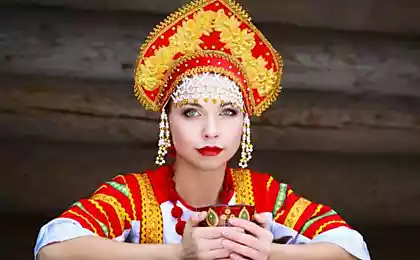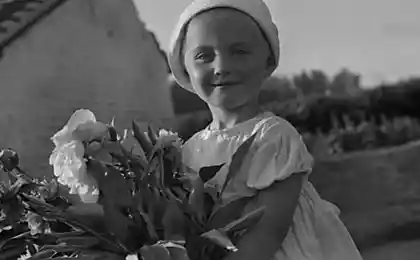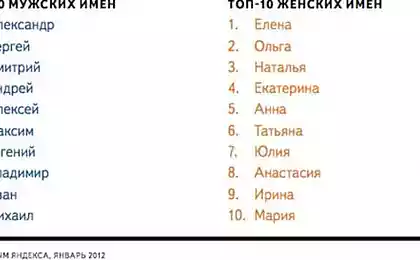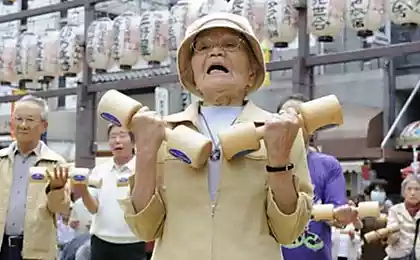4165
Japanese names, history, meaning and values

Modern Japanese names consist of two parts - the surname, which comes first, and the name, which comes second. However, the Japanese often write their names in the "European order" (name - surname), if they write their romaji. For the convenience of the Japanese sometimes write his name in capital letters to avoid being confused with the name (because of the above jumble).
An exception is the emperor and his family. They have no names. Girls who marry princes, also lose their names.
Ancient names
Before the beginning of the Meiji Restoration names were only aristocrats (kuge) and samurai (bushi). All the rest of the population of Japan was content personal names and nicknames.
Women aristocratic and samurai families also usually did not wear names because they do not have the right of inheritance. In cases where the names of the women still are, they have not changed them in marriage.
Surnames were divided into two groups - the names and the names of the samurai aristocracy.
In contrast, the number of the names of the samurai, the number of the names of the aristocrats did not increase since ancient times. Many of them went back to the priestly past the Japanese aristocracy.
Pochtai most respected clans and aristocrats were: Konoe, Takashi Kudzё, Ichijo and Gojo. All of them belonged to the genus Fujiwara and have a common name - "Gosetsuke." Among the men of this kind were appointed regents (sessё) and Chancellor (kampaku) of Japan, and of women - to choose a wife for emperors.
Following by the nobility were the clans Hirohata, Daigo, Kuga, Oymikado, Saionji, Sanjo, Imaydegava, Tokudaydzi and Kaoin. Appointed from among them senior government dignitaries. For example, members of the clan Saionji served imperial stables (merё but Gaughan). Then there were already all the other aristocratic clans.
The hierarchy of nobility aristocratic families began to take shape in the VI century and lasted until the end of the XI century, when the power in the country passed to the samurai. Among them special respect enjoyed Seiwa Genji (Minamoto), Heike (Taira), Hojo, Ashikaga, Tokugawa, Matsudaira, Hosokawa, Shimazu, Oda. A number of their representatives at various times of the shogun (military ruler) of Japan.
Personal names of aristocrats and high-ranking samurai formed of two kanji (characters) "noble" sense.
Personal names samurai-servants and peasants were often given to the principle of "numbering". The first son - Ichiro, the second - Jiro, the third - Saburo, the fourth - Siro, the fifth - Goro, etc. Also, in addition to & quot; -PO & quot ;, used for this purpose suffixes & quot; -emon & quot ;, & quot; -dzi & quot ;, & quot; -dzo & quot ;, & quot; -suke & quot ;, & quot; -be & quot ;.
Upon entry of the samurai during his youth, he chose a different name than the one he was given at birth. Sometimes samurai changed their names and throughout adult life, for example, to emphasize its new offensive period (promotion or transfer to another duty station). Mister had the right to rename his vassal. In the case of serious illness sometimes name was changed to the name of Amida Buddha, to appeal to his mercy.
According to the rules of samurai samurai fights before the fight had to give his full name, so that the enemy could not decide whether he is worthy of such a rival. Of course, life is usually much less respected than in novels and chronicles.
At the end of the names of the girls from noble families suffix & quot; & quot ;. -hime It is often translated as "princess", but in fact it has been used in relation to all the noble ladies.
For the names of the wives of the samurai used the suffix & quot; & quot ;. -godzen They are often referred to simply by the name and rank of her husband. Personal names of married women almost only used their close relatives.
For the names of monks and nuns of noble estates used the suffix & quot; -in & quot ;.
Modern names
During the Meiji Restoration, the Japanese have been assigned to all the names. It is natural that most of them were associated with different signs of peasant life, especially with rice and its treatment. These names, as well as the names of the upper class, and are usually composed of two kanji.
The most common Japanese names now - Suzuki, Tanaka, Yamamoto, Watanabe, Saito Sato, Sasaki, Kudo, Takahashi, Kobayashi, Kato, Ito, Murakami, Oonishi, Yamaguchi, Nakamura, Kuroki, Higa.
Male names have changed less. They are also often dependent on the "sequence number" son in the family. Frequently used suffixes & quot; -iti & quot; and & quot; & quot ;, -kadzu meaning "first son" and the suffix & quot; -dzi & quot; ("Second son") and & quot; -dzo & quot; ("Third son»).
Names containing "blues" are generally considered to be unsuccessful and unhappy, because "syn" in Japanese - "death».
Most Japanese women's names end in & quot; ko & quot; ("Child") or & quot; -th & quot; ("Beauty"). The girls are usually given names related in meaning to everything beautiful, pleasant and feminine. In contrast, male names, female names usually are not recorded kanji, hiragana and.
Some modern girls do not like the end of the & quot; ko & quot; in their names and prefer to omit it. For example, a girl named "Yuriko" can call themselves "Urey».
According to a law passed during the reign of Emperor Meiji, after marriage the husband and wife are legally required to take one name. In 98% of cases, this is the name of her husband. For several years now under discussion in Parliament an amendment to the Civil Code, permitting spouses to leave the maiden names. However, while it can not recruit the necessary number of votes.
After the death of Japanese gets a new, posthumous name (kaymё), which is written on a special wooden plate (ihay). This label is considered the epitome of the spirit of the deceased and is used in the memorial ceremonies. Kaymё and ihay purchased from Buddhist monks - sometimes even before the death of the person.























